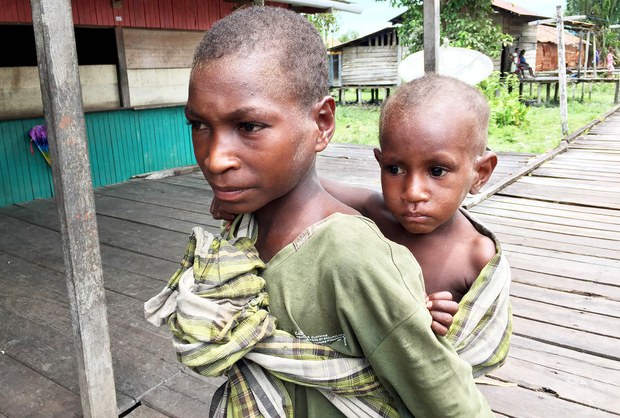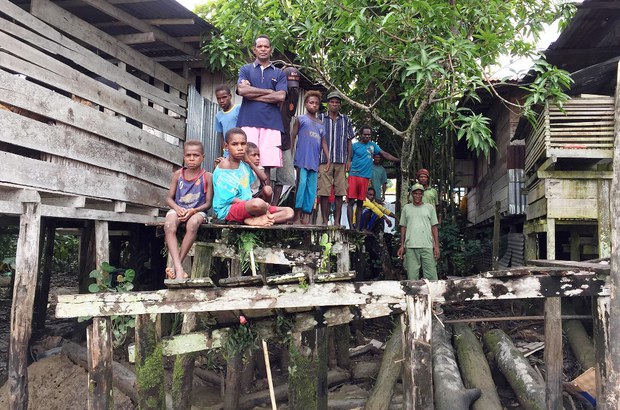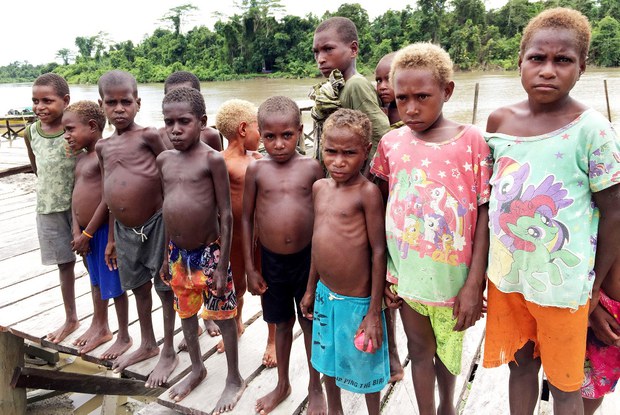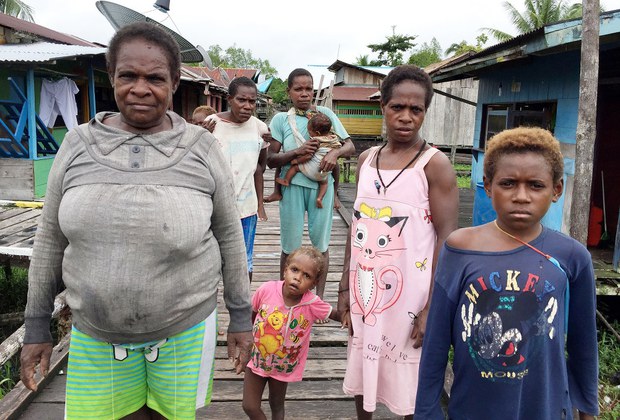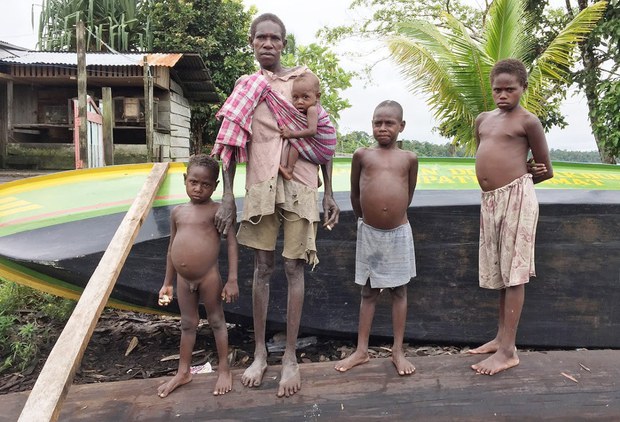Asmat People: Portraits of Poverty in Indonesia’s Papua Region
2018.07.26
Agats, Indonesia, and Jakarta
The village of Tomor, where rivers weave like snakes through thick forest, is so remote that its 500 residents have no regular access to education and health services supplied by the government.
A BenarNews team used a speedboat to visit Tomor, one of the far-flung villages of Asmat, a regency in Indonesia’s easternmost province of Papua, where health officials said 790 children were stricken with malnutrition and a measles outbreak in January, killing at least 72 of them.
President Joko “Jokowi” Widodo ordered medical teams and military paramedics to deliver supplies and medicine to remote villages on Jan. 15, after news spread about the measles outbreak. About three weeks later, the health ministry declared that the health crisis was under control.
Papua, home to one of the world’s biggest copper and gold mines, is one of the nation’s poorest regions and is where a low-level armed separatist movement has simmered for decades. Its adult literacy rate is the lowest among all of Indonesia’s provinces.
Papua’s Asmat people used to spend months in the forest to find food, historians said, but cultural changes began taking place in the 1950s when Christian missionaries arrived, dramatically changing the diet of the semi-nomadic tribes.
Donatus, a resident who uses only one name, told BenarNews that his three children had died from measles and malnutrition. They did not receive medical treatment, he said.
“We have big hopes that government would give us closer attention,” Donatus, 42, said.
“Otherwise, we just have to accept our fate.”








